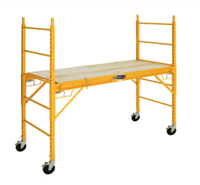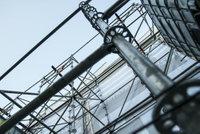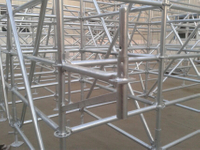Content Menu
● Introduction to Deck Scaffolding Systems
● Advantages of Deck Scaffolding Systems
● Popular Deck Scaffolding Systems
>> 1. Cuplock System with Decking Infill
>> 2. QuikDeck Suspended Access System
>> 3. Ringlock Scaffolding System
>> 4. Kwikstage Scaffolding System
>> 5. G-Deck Scaffolding System
● Factors to Consider When Choosing a Deck Scaffolding System
>> 1. Project Requirements
>> 2. Budget Constraints
>> 3. Safety Standards
● Safety Considerations for Deck Scaffolding Systems
● Case Studies: Successful Use of Deck Scaffolding Systems
>> 1. High-Rise Construction with QuikDeck
>> 2. Renovation Projects with Cuplock
>> 3. Industrial Use of Ringlock
● Comparison of Deck Scaffolding Systems
● Conclusion
● FAQ
>> 1. What are the primary benefits of using a deck scaffolding system?
>> 2. How does the Cuplock system differ from other modular scaffolding systems?
>> 3. What safety features should I look for in a deck scaffolding system?
>> 4. How do I determine the appropriate load-bearing capacity for my project?
>> 5. Can deck scaffolding systems be used for renovation projects?
● Citations:
Choosing the right deck scaffolding system is crucial for ensuring safety, efficiency, and cost-effectiveness in construction projects. With various options available, selecting the best system requires careful consideration of project requirements, budget constraints, and safety standards. This article will guide you through the process of selecting the ideal deck scaffolding system, highlighting key factors and popular systems like Cuplock and QuikDeck.
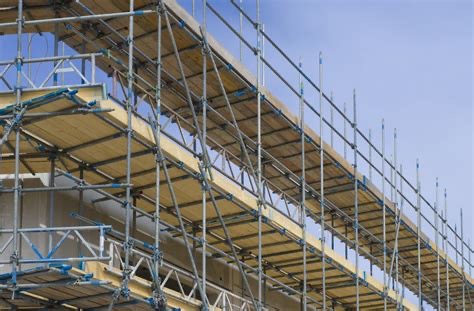
Introduction to Deck Scaffolding Systems
Deck scaffolding systems are designed to provide a stable working platform for construction activities, such as slab casting, formwork, and renovation projects. These systems are modular, allowing for easy assembly and customization to fit different project needs.
Advantages of Deck Scaffolding Systems
1. Efficiency and Versatility: Deck scaffolding systems offer a solid working surface, enhancing worker mobility and productivity. They can be adapted to various construction scenarios, including new builds, renovations, and repairs.
2. Safety Features: These systems provide a secure environment with clear, trip-free surfaces, protecting workers from falls and equipment damage.
3. Easy Assembly: Modular components facilitate quick setup and dismantling, reducing project timelines and costs.
Popular Deck Scaffolding Systems
1. Cuplock System with Decking Infill
The Cuplock system, widely used in Asia, is renowned for its versatility and efficiency. It uses cups to connect ledgers and transoms, allowing for easy adjustments to accommodate different heights and spans.
Advantages of Cuplock System:
- Increased Efficiency: Provides a stable platform for construction activities.
- Versatility and Customization: Offers flexibility in choosing decking materials based on project requirements.
- Easy Assembly: Facilitates quick setup and adjustments.
Disadvantages:
- Limited Load-Bearing Capacity: May not support exceptionally heavy loads.
- Cost Considerations: Additional expenses for high-quality decking materials.
2. QuikDeck Suspended Access System
QuikDeck is a high-performance suspended access system ideal for new constructions and renovations. It offers fast assembly, high load capacity, and flexibility in design.
Key Features of QuikDeck:
- Efficient Assembly: High assembly speed with minimal components.
- Safety: Provides a clear working environment with robust construction.
- Flexibility: Suitable for various construction shapes and sizes.
3. Ringlock Scaffolding System
Ringlock scaffolding, also known as rosette scaffolding, features vertical standards with ring-shaped node points. This system allows for easy assembly and disassembly, making it versatile and safe.
Advantages of Ringlock System:
- Versatility: Offers 8-direction connections, enhancing flexibility.
- Safety: Provides a robust structure suitable for heavy loads.
- Efficiency: Facilitates quick setup and adjustments.
4. Kwikstage Scaffolding System
Kwikstage scaffolding is ideal for light to medium-duty jobs. It uses V-shaped fittings to connect ledgers, offering a stable and efficient working platform.
Advantages of Kwikstage System:
- Efficiency: Easy to assemble and disassemble.
- Cost-Effectiveness: Suitable for smaller projects with lower budgets.
- Versatility: Can be used in various construction scenarios.
5. G-Deck Scaffolding System
G-Deck is another versatile scaffolding system that provides a stable working platform. It is designed for easy assembly and offers a range of safety features.
Key Features of G-Deck:
- Efficiency: Quick setup and disassembly.
- Safety: Includes features like handrails and secure ladder access.
- Flexibility: Suitable for various construction projects.
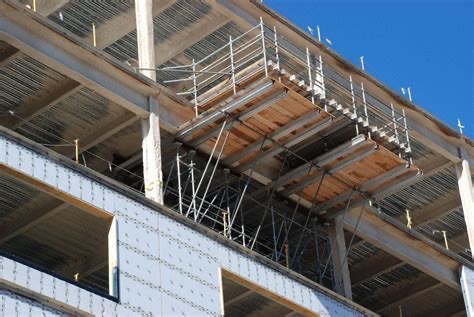
Factors to Consider When Choosing a Deck Scaffolding System
1. Project Requirements
- Load-Bearing Capacity: Ensure the system can support the weight of workers, equipment, and materials.
- Customization: Choose a system that can adapt to specific project needs, such as unique shapes or heights.
2. Budget Constraints
- Initial Costs: Consider the cost of the scaffolding system and decking materials.
- Long-Term Savings: Evaluate potential savings from increased efficiency and reduced labor costs.
3. Safety Standards
- Compliance with Regulations: Ensure the system meets local safety standards and regulations.
- Worker Training: Provide adequate training on assembly, use, and dismantling of the scaffolding system.
Safety Considerations for Deck Scaffolding Systems
Safety is paramount when using deck scaffolding systems. Key considerations include:
- Regular Inspections: Conduct regular checks for damage or wear.
- Proper Assembly: Ensure all components are securely connected.
- Fall Protection: Implement fall protection measures such as guardrails and safety nets.
Case Studies: Successful Use of Deck Scaffolding Systems
1. High-Rise Construction with QuikDeck
QuikDeck has been successfully used in high-rise construction projects due to its flexibility and high load capacity. It allows for parallel work on multiple platforms, enhancing project efficiency.
2. Renovation Projects with Cuplock
Cuplock systems are often used in renovation projects due to their ease of assembly and customization. They provide a stable working platform for workers, ensuring safety and efficiency.
3. Industrial Use of Ringlock
Ringlock scaffolding is widely used in industrial settings due to its versatility and robust construction. It supports heavy loads and allows for complex configurations.
Comparison of Deck Scaffolding Systems
| Scaffolding System | Load Capacity | Assembly Speed | Versatility |
| Cuplock | Medium | Fast | High |
| QuikDeck | High | Very Fast | Very High |
| Ringlock | High | Fast | Very High |
| Kwikstage | Medium | Fast | Medium |
| G-Deck | Medium | Fast | Medium |
Conclusion
Choosing the best deck scaffolding system involves balancing project needs, budget constraints, and safety considerations. Systems like Cuplock, QuikDeck, and Ringlock offer versatility, efficiency, and safety features that can enhance construction productivity. By carefully evaluating these factors, you can select a deck scaffolding system that optimizes your project's success.
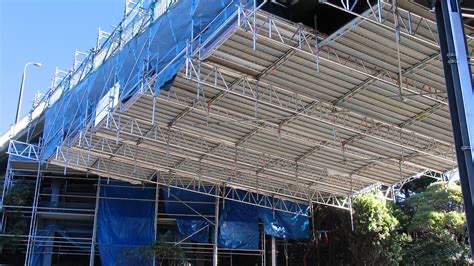
FAQ
1. What are the primary benefits of using a deck scaffolding system?
The primary benefits include increased efficiency, versatility, and safety. Deck scaffolding systems provide a stable working platform, allowing for easy movement and operation during construction tasks. They also offer flexibility in design and can be easily assembled and disassembled.
2. How does the Cuplock system differ from other modular scaffolding systems?
The Cuplock system is distinguished by its unique cup-and-ledger connection mechanism, which allows for easy adjustments and customization. It is widely used in Asia and offers a balance between efficiency and cost-effectiveness.
3. What safety features should I look for in a deck scaffolding system?
Key safety features include a clear and trip-free working environment, robust construction to protect against falls and equipment damage, and compliance with local safety regulations. Regular inspections and proper assembly are also crucial.
4. How do I determine the appropriate load-bearing capacity for my project?
To determine the appropriate load-bearing capacity, calculate the combined weight of workers, equipment, and materials that will be on the scaffolding. Ensure the system's capacity exceeds this total to prevent structural failure.
5. Can deck scaffolding systems be used for renovation projects?
Yes, deck scaffolding systems are highly suitable for renovation projects. They provide easy access to different levels of a building, allowing workers to perform tasks efficiently while ensuring safety and stability.
Citations:
[1] https://aaitscaffold.com/blog/types-of-modular-scaffolding/
[2] https://www.youtube.com/watch?v=3WnpWxG1b_4
[3] https://www.wm-scaffold.com/scaffolding-system/
[4] https://www.youtube.com/watch?v=o02eZlDt7yA
[5] https://australianscaffolds.com.au/documents/layher_allround_scaffolding_comparison.pdf
[6] https://www.youtube.com/watch?v=aKEq9bcyPrI
[7] https://www.thestraightwire.com/post/exploring-the-different-types-of-scaffolding-a-complete-overview
[8] https://www.youtube.com/watch?v=m4R33xOsAek
[9] https://www.bpsdepot.co.uk/blog/the-different-types-of-scaffolding-towers
[10] https://www.unitedrentals.com/project-uptime/equipment/types-scaffolding-systems-how-choose-right-one-job













